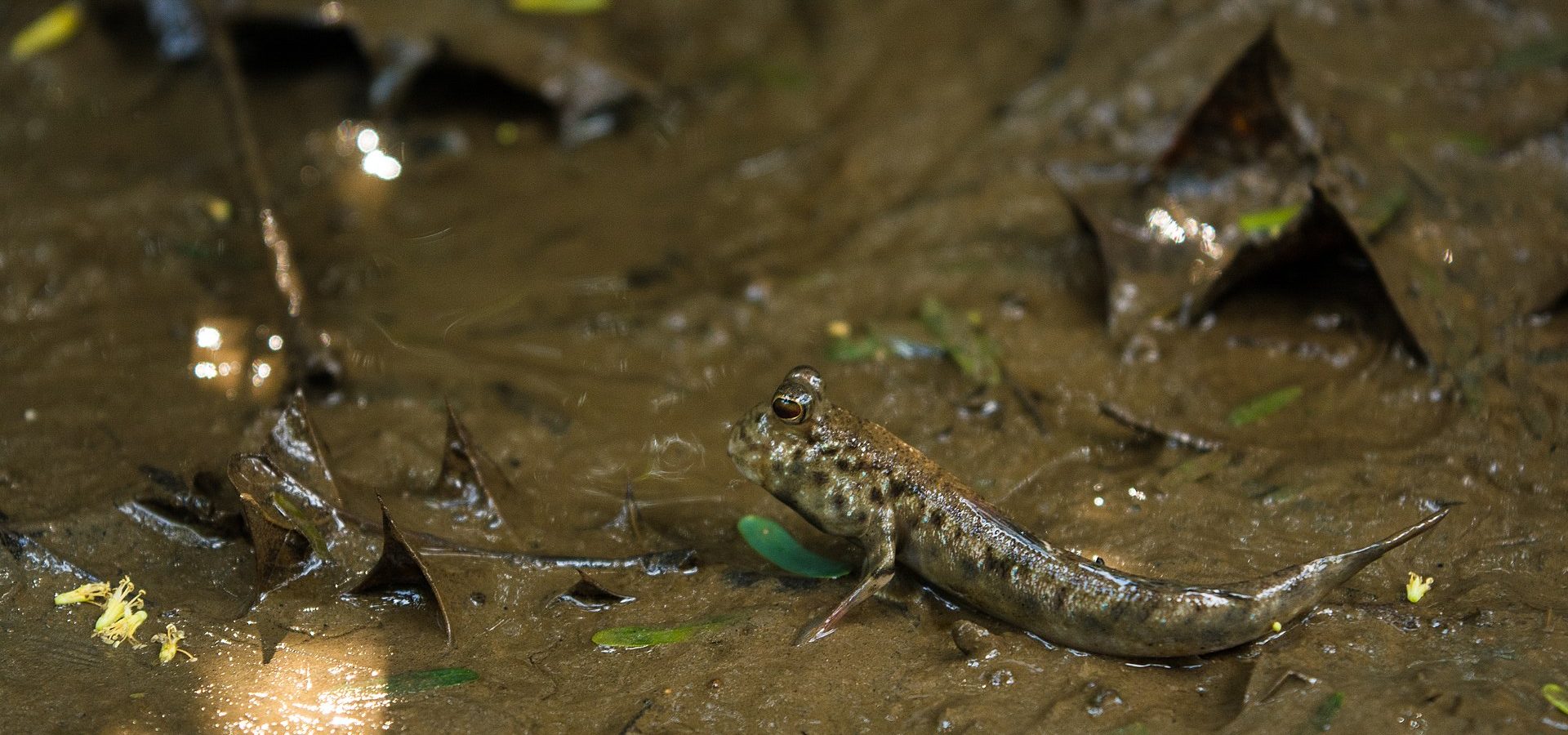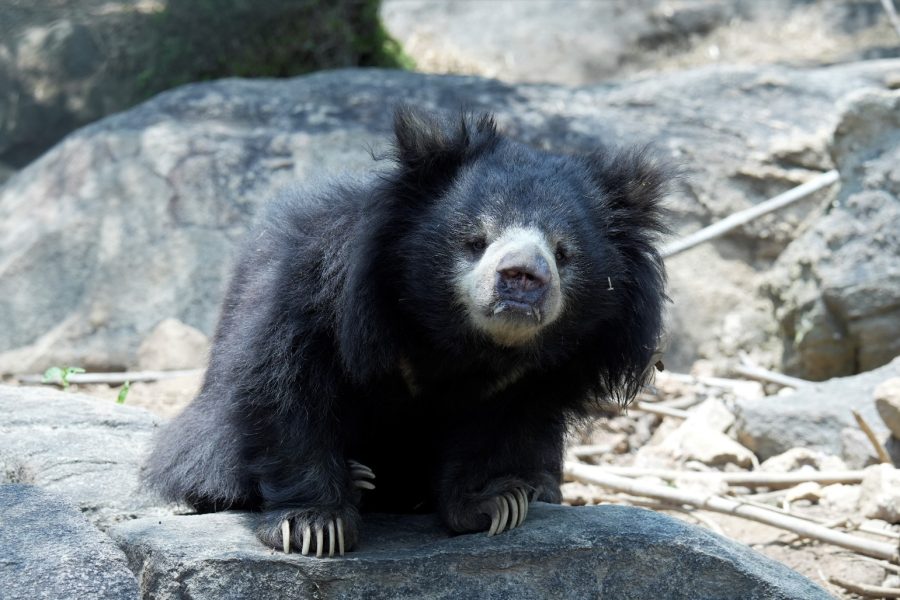Mangrove forests mostly consist of trees and shrubs growing in intertidal areas (where land meets the sea). What is unique about these forests is that they can be classified under more than one category of coastal ecosystems: estuary and tidal marsh. The meandering rivers running through these regions form a vast and complex network, whereby they mix with saltwater and form estuaries. These brackish estuarine ecosystems are lined with mangrove vegetation.
Mangroves can also be classified as tidal marshes, which are coastal ecosystems shaped by the tidal movement of saltwater. The scale of ecosystem services which mangrove forests provide is widely underestimated. These forests ensure carbon sequestration, livelihoods and protection against coastal erosion, storms and cyclones.
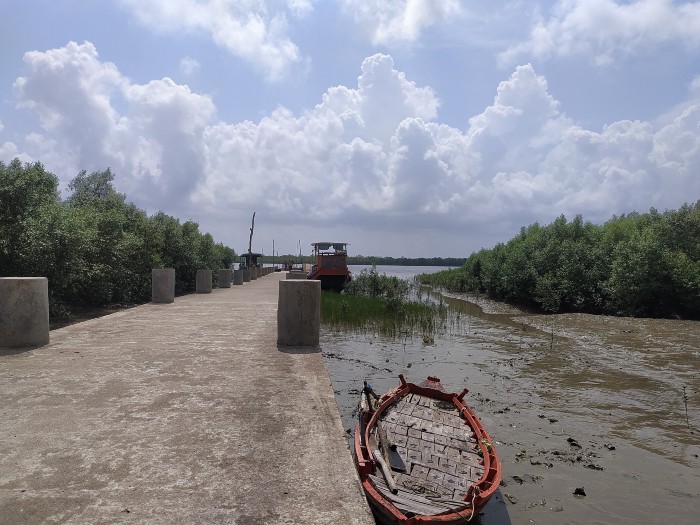
In India, mangroves are found in Maharashtra, Goa, the Andaman and Nicobar islands, and West Bengal. This forest is a peculiar home for its inhabitants due to the harsh weather conditions, dense foliage and the constant ebb and flow of water it offers. Hence, we find some of the toughest and most fascinating animals living in India’s mangroves. These include the largest reptile on Earth, the fish that walks on land and the only mangrove tiger!
Bengal Tiger
Spanning 10,000 sq km across India and Bangladesh, Sundarbans is the largest contiguous mangrove forest in the world and hosts the only tiger found in a mangrove forest. Forty percent of the Sundarban forest lies in India’s eastern state of West Bengal, which is essentially an archipelago of 102 islands.
An estimated 48 of these islands are inhabited by human beings. Therefore, the sheer inevitability of human-tiger conflict in this region is a foregone conclusion. In fact, West Bengal is often regarded by experts as the global capital of human-tiger conflict. Despite the tiger attacks in this region, people here still understand the importance of the animal and its ecological role.
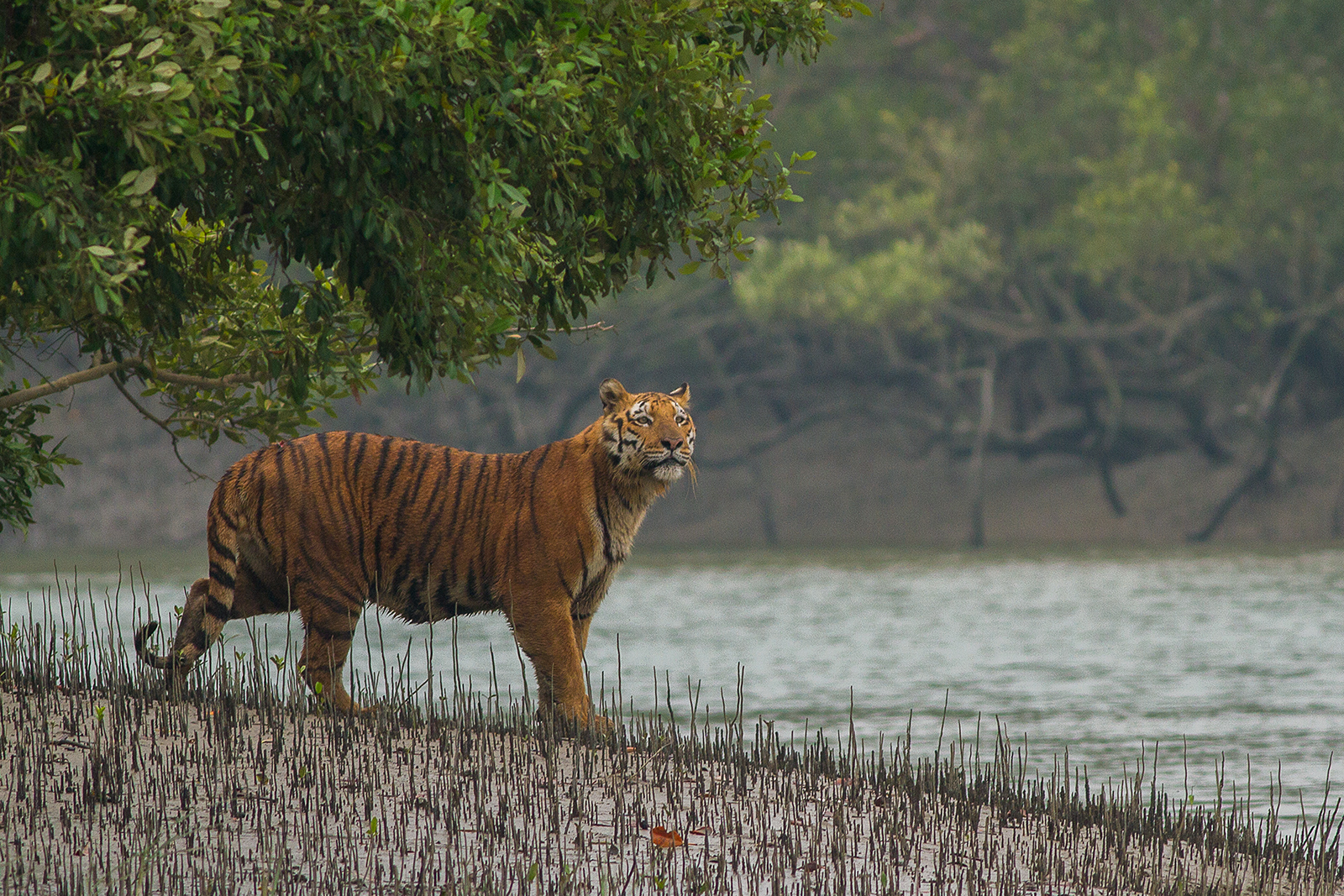
All that said, the Bengal tiger of Sundarbans is the smallest subpopulation of the species, simply because of the testing terrain and the difficulty to hunt for prey. Nevertheless, this feline is well adapted to this habitat and has even been spotted feeding on crustaceans such as Fiddler crabs, thereby justifying its title of being the apex predator on land. This way, the tiger acts as an indicator of the ecosystem’s health. Interestingly, due to its elusive nature, the tiger has acquired many monikers, one being “ghost”, and another being “god”. While you may not be able to spot one on your safari, you can be certain that the tiger is always watching.
Saltwater Crocodile
If the tiger is the apex predator on land, then the Saltwater or Estuarine crocodile is the apex predator in the water. A prehistoric wonder, the Saltwater crocodile is the largest reptile currently found on our planet and they can grow up to 20 feet in length. Travelling south from the Sundarbans, right down to the islands of Andaman and Nicobar, they can be spotted in the open sea, near the shore, mangrove creeks and swamps.
They are found on the beaches at Wandoor, Corbyn’s Cove and Munda Pahar in south Andaman, as well as in the neighbouring Havelock Islands. However, human-crocodile conflict has taken a drastic turn here — In 1951, the islands had a human population of roughly 41,000, which rose to almost 3.8 lakh in 2011 as per the Census. The rise in tourism has also added to the conundrum. According to reports, the number of tourists increased from 4,30,000 in 2016 to 5,00,000 in 2017. This influx of tourists, combined with the rise in the local population, has brought humans face to face with the crocs.
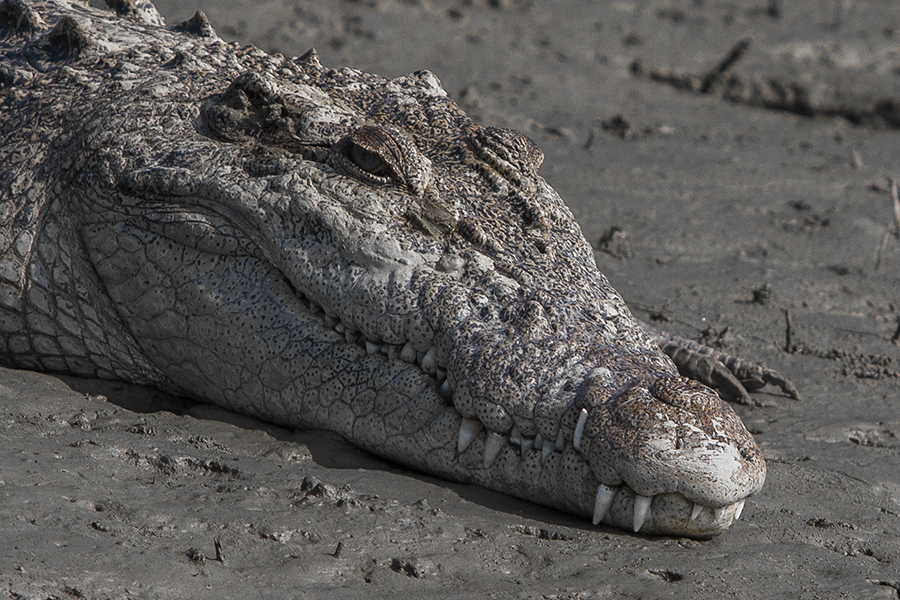
However, like any other fierce predator, the Saltwater crocodile too has a maligned reputation. In fact, they were poached heavily until the 1960s for skin, meat and as trophies. But Project Crocodile, launched by the government in 1975, helped their population to bounce back. A conservation-oriented approach now breeds crocodiles for release in the Haddo Zoo in Port Blair. The Saltwater crocodile is listed under Schedule I of the Wildlife (Protection) Act, 1972, and killing them is punishable up to 7 years in prison.
Mudskipper
Ah! Here comes the fish that walks on land. Nature has its own ways of surprising people, and mudskippers are indeed one of them. These amphibious fishes are able to leave water for extended periods of time. This is primarily due to their physiological and morphological evolution, as well as their dietary needs. Their side pectoral fins are one of their most distinctive features and they almost act as legs, allowing them to locomote from one place to another. These fins also help them to climb trees and branches, and even jump distances of up to two feet!
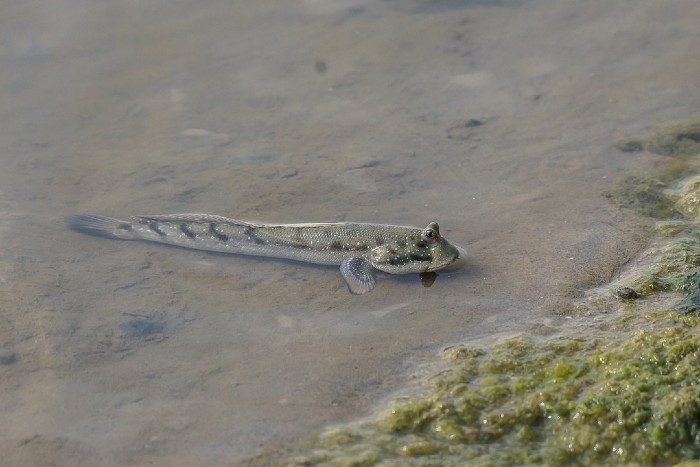
Mudskippers are found on mangrove mudflats and are seen to skip across these muddy surfaces, hence giving them their name. When on land, mudskippers are extremely active and are known to feed, interact, defend territories and even court for potential partners. During the mating season, the males develop brightly coloured spots to attract females. The spots usually differ between red, green or blue. So, when you do find yourself near a mangrove mudflat, keep your eyes wide open for this small wonder!
Northern River Terrapin
The Northern river terrapin is a rare turtle species of India, and one of the rarest in the whole world. They are listed as ‘Critically Endangered’ by the International Union for Conservation of Nature (IUCN). The terrapin has been extirpated across a large part of its former range, and hence, conservation efforts have been initiated to breed them in captivity. In India, they are found only in the Sundarbans, inhabiting coastal estuaries and mangrove creeks. An omnivore, the terrapin’s diet includes waterside plants and small animals such as clams. The female turtles nest in sandbars and banks far upstream from the normal estuarine habitat during the breeding season, i.e from December to March.
Once considered abundant in the 1900s, the population of these turtles has declined immensely due to an increase in human settlements in the Sundarbans. An unsustainable collection of turtle eggs as food has been responsible for their diminishing numbers. That is why captive breeding programs, as a conservation measure, are one of the best chances to revive the Northern river terrapin. In January 2022, 10 subadult turtles were released into a river within the Sundarban National Park. These turtles will be monitored and hopefully, they will give birth to more offspring and revive the species’ wild population.
Kingfisher
There are over 1,300 bird species in India. The Sundarbans region alone has a record of 428 bird species according to the Zoological Survey of India, which means that one in every three bird species in the country is found here. However, there is one group of birds which makes the mangrove ecosystem unique – the Kingfishers. The mangrove forests are home to nine out of the twelve species of Kingfishers found in India.
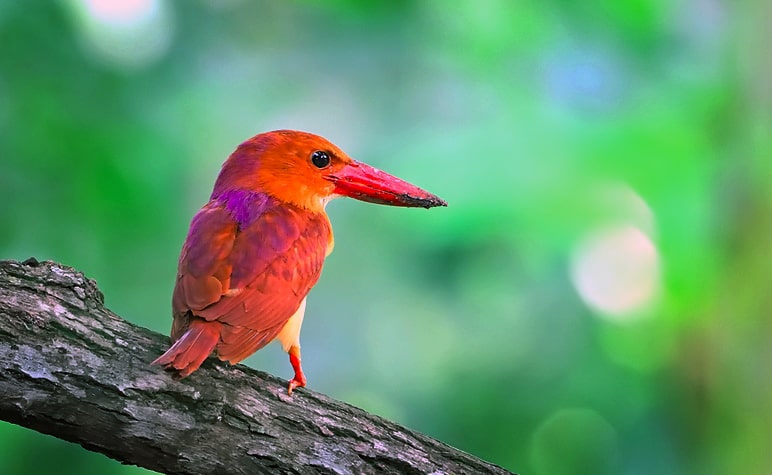
Among all other species of Kingfishers, there is but one which is the most elusive, and thus often a subject of attention for birdwatchers and tourists. The Ruddy kingfisher is a migratory bird which leaves for the Malay Peninsula when winter arrives. What sets them apart is their call, and they are heard more regularly than seen, since they restrict themselves to the deep interiors of the forest. However, there is one hack to spot them in the wild. Keep your binoculars ready when you are travelling on the boat and be on the lookout for the Avicennia alba tree (locally known as bain), since these medium-sized trees are where these kingfishers have been mostly spotted.
Looming Threats
Despite such astounding faunal diversity, various anthropogenic factors threaten mangrove forests in India, of which agriculture and aquaculture constitute the major share. Vast swathes of forests are cleared for agriculture where the land is made fertile using rainwater which reduces the salinity of the soil. Surrounding ecosystems also suffer damage due to spillover from excessive spraying of fertilisers.
Pollution is another factor severely affecting the health of the mangroves. Mangroves face huge risks from unhealthy, untreated effluents and non-biodegradable toxic waste. Plastic carry bags stuck on the branches of mangrove trees near coastal areas are a common sight today. Due to the dense human population close to mangroves, domestic solid waste is improperly disposed of, which is a direct result of the absence of an efficient waste management system. If all these factors are not resolved through committed conservation efforts and strict monitoring, we will soon not have any mangroves or their remarkable inhabitants left to appreciate.
For more stories on nature and wildlife, do subscribe to our newsletter.

